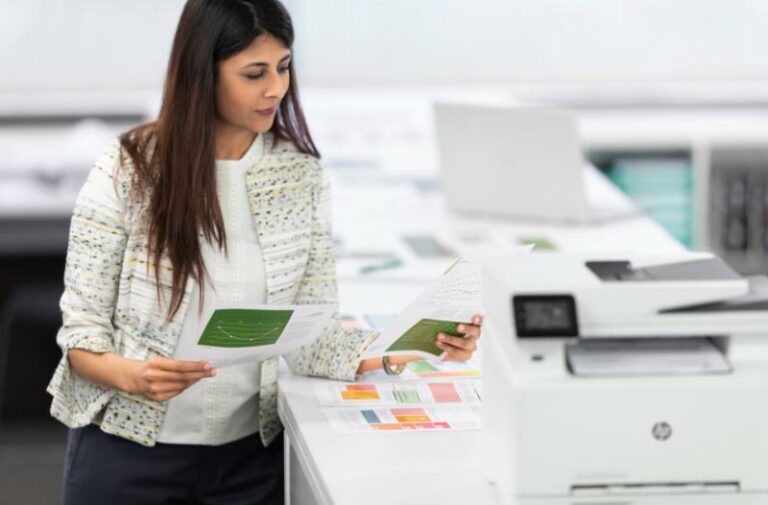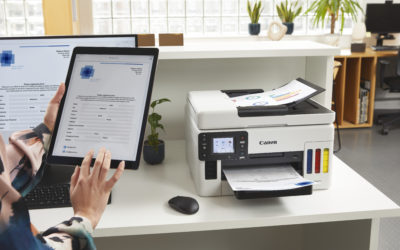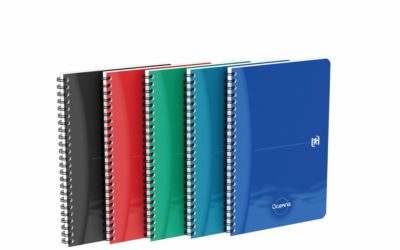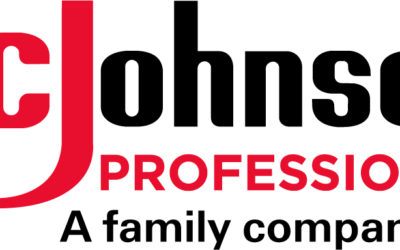With so many different types and styles of printers available, it can be difficult to choose the right one. From inkjet to laser, wireless to 3D, we’ve taken a look at the key areas you need to take into consideration to find the best printer for your business.
Printing guide jargon-buster
- A sizes – this phrase refers to the most common paper sizes used for the everyday printing of office documents.
- Process colours – these are the CMYK colours– Cyan, Magenta, Yellow and Black (also known as Key). Combined in all their various ratios, these four colours will make up any other colour you want to print.
- RAM – just like your computer, a printer has a certain memory capacity called RAM – random-access memory. The printer needs to remember all the details of the job it’s printing right now and those queued to print, which is why a good quantity of RAM is essential.
- Print preview – if you’re using Word or other Microsoft Office software, the print preview function allows you to look at how your document will fill the space on the page, before you print it.
- Resolution – the quality of resolution on a printed document is measured in DPI (dots per inch) or LPI (lines per inch). High resolution printing looks sharper and is particularly important when printing images.
- Toner – toner is the ink used in laser printers. Unlike inkjet printer ink, which is liquid, toner is a fine, dry powder substance.
- Wide-format printers – a printer that can handle documents that are A3 or bigger is known as a wide format printer.
What are your printing needs?
Think about what exactly you’ll be printing. Are you looking to print the odd photograph or will you be producing a lot of text-heavy documents? You’ll also need to take into consideration how you intend to print – will your laptop be plugged into a printer or will you use a wireless network to print documents?
Which printer is best for you?
Inkjet printer
Inkjet printers have become much more efficient and flexible in recent year – allowing for both photos and text-heavy documents to be printed. Better suited for home use, inkjet printers can print with almost no warm-up time. In terms of price, an inkjet printer may be cheaper to purchase outright – but the ink costs can add up.
- Inkjet pros – excellent for colour printing, cheaper and smaller in size.
- Inkjet cons – ink costs can add up, slower at printing black text compared to laser models.
Laser printer
If you’re looking for a basic, personal printer to produce documents in monochrome, a laser model could be the best printer for you. Laser printers use powered ink, known as toner, which melts it to the paper to produce the print. Once it gets going, a laser printer can produce high volumes of documents in quick succession, making it ideal for a business environment.
- Laser pros – fast, offers good value for money.
- Laser cons – expensive to print in colour compared to inkjet.
All-in-one printer
An all-in-one printer’s multifunctional practicality is both simple and effective. This type of printer often combines printing, scanning and photocopying in one piece of machinery – some also come with fax too – making it easy to take care of any miscellaneous tasks you may have. It’s worth noting that all-in-one printers are available as both inkjet and laser.
Opting for the cheapest all-in-one printer may be well suited for your odd-job printing tasks at home, but you’d need to invest in a high quality model in a professional environment. It’s also worth noting not every all-in-one printer has duplex built in, meaning you might not be able to automatically print on both sides of the paper.
- Pros – highly multifunctional, saves space in constricted areas.
- Cons – quality of finish is very dependent on price, commercial printers tend to be bulkier in size.
Photo printer
Although you can print a relatively good quality photo using an inkjet model, nothing compares to that of a specialist photo printer. If you’re a photography enthusiast, this could be a worthwhile investment. Or you can purchase a smartphone printer, eliminating the hassle of loading your photos onto a PC or laptop.
- Pros – can produce high quality images, uses large capacity ink cartridges that last longer.
- Cons – initial outlay cost can be more expensive than a standard printer.
Wireless printer
Choosing a wireless printer could help your office in the battle against rogue cables. You can use wireless models as a smartphone or iPad printer too, by using Wi-Fi connectivity to send documents to your printer. You can also print remotely from ‘e-print’ services and providers such as Google Drive.
- Pros – no wires/cables, can be used as a printer for iPads and smartphones.
- Cons – only available on more expensive models.
A3 printer
A small printer may be best for home use, but there may be a need for larger-scale printing in the workplace. An A3 printer for your office allows you to produce documents up to the size of A3, as well as smaller pages (such as A4 or A5 documents). However, with a bigger printer comes a bigger price tag, and you’ll find that an A3 printer can take up a lot more room too.
If you’ve got sizeable office space or printing room and have the need to create posters or large-scale plans, an A3 model could be the best printer for you or your business.
- Pros – can print on a large scale, cuts down on external printing costs.
- Cons – can take up significantly more room than a standard printer.
3D printer
Ideal for specialist industries, you can pretty much create whatever you like with a 3D printer. Whether a new turning wheel for a piece of machinery or something as simple as a knife and fork – the opportunities for plastic creation is never-ending. All you need is the appropriate computer software to build your design and then you can get going.
But, as you’d expect with a product that’s at the height of printing technology, it’s an expensive outlay – and not the cheapest printer to run either.
- Pros – ability to create items/parts/products simply and efficiently.
- Cons – expensive outlay and running costs.
If you’re still deciding which model or manufacturer is the most suitable for you, our FAQs can help point you in the right direction.
What is the cheapest printer?
The cheapest printer will vary dependent on the brand – some manufacturers are known for offering cheaper options, yet there are some more up-market brands that will offer a better quality.
Which printer is best for home use?
Choosing the best printer for your home depends on how you want to use it. Typically, a laser or inkjet model is most suited – however these both have different pros and cons, so be sure to read through the guides above before making your choice.
Which printer is best for office use?
Laser printers are able to print on either plain copy paper or special laser paper, so are ideal for offices where plenty of hard copies are needed. The cartridges for a laser printer can often be more expensive than inkjet refills, but usually print more pages. If your business is more digital than paper copies, an inkjet printer can make more sense as they often cost less than a laser printer.
What are the best printing apps?
If you’re looking at a wireless model, you’ll need to download or install an application on your device to access the printer. Check with the manufacturer whether they’ll supply you with this or if you have to download it from an app store.
What about printing speed?
There are two key areas to be aware of – Pages Per Minute (PPM) and Images Per Minute (IPM). The higher the PPM or IPM rating, the quicker your printer will be. Each manufacturer and model will differ, so be sure to double check before purchasing.
Use our flow chart below to help find the perfect printer for you.
Things to consider when buying a printer
- Page Yield. This is how many pages a cartridge can print before it needs replacing. It’s worth comparing the page yields and toner or cartridge costs. After all, the cost of replacement toner cartridges will outweigh the initial purchase price, so you need to make sure the machine you choose will deliver value for money over the long term.
- A3 and large format printers. If you ever have to print on larger sizes of paper, then an A3 and large format printer could be an option. These generally also work as a scanner and a copier, and are predominantly inkjet models. Running costs are in line with other inkjets but, obviously, printing on larger A3 paper will mean higher paper costs and your ink cartridges won’t last as long.
Looking after your printer
- Use your printer often
Like all machines, a printer will benefit from being used regularly. It prevents rollers from seizing up and dust from gathering, and stops the ink in its cartridges from drying out.
- Use good quality paper
Using quality paper will not only improve the standard of your print-outs, but also reduce the risk of any potential paper jams.
- Turn it off when you’re not using it
Make sure to turn it off at night and for the periods of the day when it’s not being used to help stop it over heating.
- Only use quality cartridges
Always use the genuine cartridges for your particular machine. Using components not made by its original manufacturer could actually cause damage.
- Download the latest drivers
Printing problems often occur because you’re not using the latest software for your machine. Check the manufacturer’s website to see if there have been any updates.
Decided on your ideal printer? Now just choose the right model and manufacturer. Browse our stock and order your new printer today.







